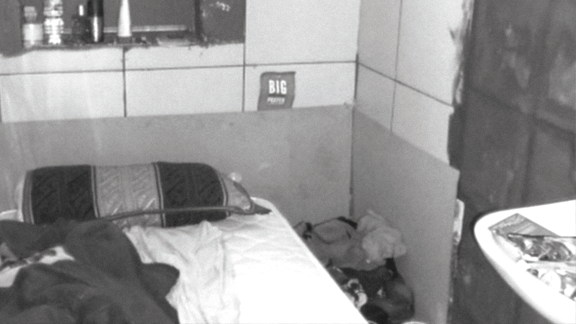Public housing spending needed to stop slumlords

A year after flames engulfed his shantytown in the Sydney suburb of Alexandria, Masaaki Imaeda has had no action taken against him. Fire investigators believe the blaze was sparked by makeshift electrical wiring Imaeda installed to serve the 15 people living in his slum.
Imaeda’s tenants had each been paying up to $160 a week to live in repurposed buses, shipping containers or old caravans stacked on top of each other. They were lucky to escape with their lives, but their former landlord has walked away a very rich man. Six months ago, he sold the property for at least $3.8 million.
The exploitative and potentially tragic conditions of this rental arrangement are shocking but not exceptional. Last month another story surfaced; 58 beds crammed into a three-bedroom house in Ultimo, less than five kilometres from the site of last year’s shanty fire.
The city of Sydney’s response to the housing crisis has been showy. In March, it formed a “specialist investigations team” to “shut down” the short-term rental black market. Former Scotland Yard senior detective Roy Cottam and his team have been tasked with scouring Gumtree and other free classifieds websites to sniff out the shonky operators. Cottam has issued a stern warning to slumlords: “We want to send out the strong message – we are coming after you”.
Unsurprisingly, the task force has had no shortage of leads, executing more than 20 search warrants since the start of May and opening 38 investigations by the middle of June. But an obvious question remains. Where will the tenants living in these set-ups move to after police close them down?
“We really want to get to the bottom of this. There is terrible exploitation going on here”, said Sydney lord mayor Clover Moore at a 16 June press conference at Town Hall. She admitted that lack of affordable housing was a factor driving people to live in slum conditions.
Soaring Sydney house prices have been highlighted recently by Fairfax Media research showing that a nurse, on an average salary, could not afford to buy a house in 95 percent of Sydney’s suburbs. Sydney rents are the highest in Australia, averaging $595 per week, an increase of 3.1 per cent in the past year.
“High rents, lack of affordable housing and weak tenancy laws allow slumlords to thrive”, Martin Barker from Inner West Tenants’ Advice and Advocacy told Red Flag. “Particularly at risk of exploitation are international students and the working poor who have little choice but to put up and shut up while paying high rents in dilapidated and overcrowded properties”, he said.
Both sides of politics and various levels of government have overseen a steady decline in public housing funding over the last 30 years. Public housing residents, particularly the elderly, are increasingly being evicted from their homes so they can be sold off. Promised replacement housing often doesn’t materialise or incorporates a proportion of “community” or “affordable” housing units. The picture is similar in across the country.
In a report for the Australian Housing and Urban Reserach Institute, released in 2014, Lucy Groenhart and Terry Burke found that “the period from 1996 to 2011 saw a real decline in the number of public rental dwellings by 12,000 and a relative decline to only 4.06 percent of the national dwelling stock.”
On Cowper Street in Glebe, in Sydney’s inner west, 15 public housing apartment blocks were demolished by the state Labor government in 2011. It pledged to build new public housing on the site, but instead the next state Liberal government approved the site for a mix of public, “affordable” and private housing.
Late last month, expressions of interest went out to build the private apartments. The office of Brad Hazzard, Family and Community Services minister, insists that money raised will be “reinvested” in social housing. This will be a familiar tale to public housing residents at Millers Point, who were told that money from the sale of the homes they were evicted from would be used to build public housing at Cowper Street.